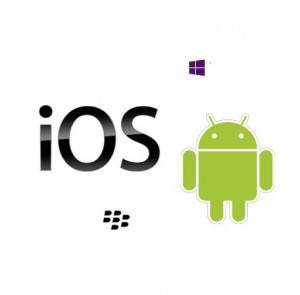Will A Two-Party System Adequately Represent Smartphone Users?
 A few days ago, Research In Motion–newly renamed just BlackBerry–made its bid to be the third way in what increasingly looks like a two-platform market.
A few days ago, Research In Motion–newly renamed just BlackBerry–made its bid to be the third way in what increasingly looks like a two-platform market.
The timing of its new BlackBerry 10 operating system and Z10 and Q10 phones could be worse, but not by much. ComScore’s latest surveys give Google’s Android 53.7 percent of the U.S. smartphone market and Apple’s iOS 35 percent. Worldwide, a few months ago Gartner put Android’s share at 72.4 percent and iOS’s at 13.9 percent; on Monday, Strategy Analytics saw Android and iOS combining for 92 percent of the market.
RIM’s older BlackBerry releases held down a shrinking share of the remaining slice, while Microsoft hasn’t carved out more than 3 to 5 percent since the October 2010 debut of its reinvented Windows Phone platform.
Should we just accept that Android and iOS are fated to be the Windows and Mac of the mobile market?
I don’t want to. On the desktop, a two-party system functions because the Web provides an equalizing force. Years of effort by Web developers–combined with the nuisance factor of installing and updating many disk-based programs–have made it into the “middleware” platform that Judge Thomas Penfield Jackson described in his Findings of Fact in the Microsoft antitrust case.
So if you use any modern browser in OS X or Windows 7 or 8–or if you open a Chromebook, where the browser is about the only visible part of the operating system–you can be about as productive and creative.
Mobile hasn’t evolved that way. Most smartphone users have never known anything but one-tap app acquisition through channels like Apple’s App Store and Google’s Play Store. The mobile Web, however, has been held back by a format war over video.
(It did not help when Google briefly blocked Windows Phone users from visiting the mobile version of its Google Maps site.)
And iOS and Android have yet to fix some mobile-computing issues after years of trying. With Apple, you have to take an inflexible app-management interface and occasional excursions into control-freakery that see worthy applications rejected or ejected from the App Store. Android users, meanwhile, have historically suffered from inferior battery life and run the risk of software-update abandonment by manufacturers and carriers.
I don’t know if BlackBerry’s rebuilt operating system and phones will pose a meaningful challenge to Google and Apple, or if they will share the fate of Palm’s once-promising WebOS. Early reviews have pointed to issues like battery life and the current and promised selection of apps, even as they’ve complimented BB10’s touch-driven interface.
Microsoft’s Windows Phone, meanwhile, still needs more and better third-party software, even as its Windows Phone 8 release has delivered such notable upgrades over WP7 as a “Kid’s Corner” mode and the ability to add augmented-reality and image-recognition tools to WP8’s camera app as “lenses.”
BB10 and WP8 aren’t the only alternatives–at Mobile World Congress later this month, I expect to see the phones running Mozilla’s Firefox OS, and the Linux distribution Ubuntu staged hands-off demos of its own smartphone operating system at CES.
But BlackBerry and Microsoft have an extra advantage over younger, smaller challengers: extensive libraries of patents that they can wield defensively if necessary (but not, we can only hope, offensively). Considering the suffocating density of the smartphone patent thicket, you may have no option but to root for one of those big-name vendors to keep a fire going under Google and Apple.








